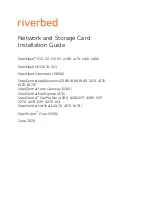
Section 11 Local Bus State Controller (LBSC)
Rev. 1.00 Oct. 01, 2007 Page 361 of 1956
REJ09B0256-0100
11.5.2 Areas
(1)
Area 0
For area 0, external address bits A28 to A26 are 000.
The interfaces that can be set for this area are the SRAM, MPX, and burst ROM interfaces.
A bus width of 8, 16, or 32 bits is selectable with external pins MD4 and MD3 at a power-on reset.
For details, see section 11.3.2, Memory Bus Width.
When area 0 is accessed, the
CS0
signal is asserted. In addition, the
RD
signal, which can be used
as
OE
, and write control signals
WE0
to
WE3
are asserted.
As regards the number of bus cycles, 0 to 25 wait cycles inserted by CS0WCR can be selected.
When the burst ROM interface is used, a burst pitch number in the range of 0 to 7 is selectable
with bits BW[2:0] in CS0BCR.
Any number of wait cycles can be inserted in each bus cycle through the external wait pin (
RDY
).
(When the insert number is 0, the
RDY
signal is ignored.)
When the burst ROM interface is used, the number of transfer cycles for a burst cycle is selected
from a range of 2 to 9 according to the number of wait cycles.
The setup time and hold time (cycle number) of the address and
CS0
signals to the read and write
strobe signals can be set within a range of 0 to 7 cycles by CS0WCR. The
BS
hold cycles can be
set within a range of 0 to 1 when the number of read and write strobe setup wait is 1 or more.
(2)
Area 1
For area 1, external address bits A28 to A26 are 001.
The interfaces that can be set for this area are the SRAM, MPX, burst ROM and byte-control
SRAM interfaces.
A bus width of 8, 16, or 32 bits is selectable with bits SZ[1:0] in CS1BCR. When the MPX
interface is used, a bus width of 32 bits should be selected through bits SZ[1:0] in CS1BCR. When
using the byte-control SRAM interface, select a bus width of 16 or 32 bits.
When area 1 is accessed, the
CS1
signal is asserted. In the case where the SRAM interface is set,
the
RD
signal, which can be used as
OE
, and write control signals
WE0
to
WE3
are asserted.
Summary of Contents for SH7763
Page 2: ...Rev 1 00 Oct 01 2007 Page ii of lxvi ...
Page 122: ...Section 2 Programming Model Rev 1 00 Oct 01 2007 Page 56 of 1956 REJ09B0256 0100 ...
Page 144: ...Section 3 Instruction Set Rev 1 00 Oct 01 2007 Page 78 of 1956 REJ09B0256 0100 ...
Page 170: ...Section 4 Pipelining Rev 1 00 Oct 01 2007 Page 104 of 1956 REJ09B0256 0100 ...
Page 282: ...Section 7 Caches Rev 1 00 Oct 01 2007 Page 216 of 1956 REJ09B0256 0100 ...
Page 378: ...Section 9 Interrupt Controller INTC Rev 1 00 Oct 01 2007 Page 312 of 1956 REJ09B0256 0100 ...
Page 514: ...Section 12 DDR SDRAM Interface DDRIF Rev 1 00 Oct 01 2007 Page 448 of 1956 REJ09B0256 0100 ...
Page 630: ...Section 13 PCI Controller PCIC Rev 1 00 Oct 01 2007 Page 564 of 1956 REJ09B0256 0100 ...
Page 710: ...Section 16 Clock Pulse Generator CPG Rev 1 00 Oct 01 2007 Page 644 of 1956 REJ09B0256 0100 ...
Page 732: ...Section 17 Watchdog Timer and Reset WDT Rev 1 00 Oct 01 2007 Page 666 of 1956 REJ09B0256 0100 ...
Page 752: ...Section 18 Power Down Mode Rev 1 00 Oct 01 2007 Page 686 of 1956 REJ09B0256 0100 ...
Page 772: ...Section 19 Timer Unit TMU Rev 1 00 Oct 01 2007 Page 706 of 1956 REJ09B0256 0100 ...
Page 824: ...Section 21 Compare Match Timer CMT Rev 1 00 Oct 01 2007 Page 758 of 1956 REJ09B0256 0100 ...
Page 1124: ...Section 26 I 2 C Bus Interface IIC Rev 1 00 Oct 01 2007 Page 1058 of 1956 REJ09B0256 0100 ...
Page 1350: ...Section 30 SIM Card Module SIM Rev 1 00 Oct 01 2007 Page 1284 of 1956 REJ09B0256 0100 ...
Page 1484: ...Section 33 Audio Codec Interface HAC Rev 1 00 Oct 01 2007 Page 1418 of 1956 REJ09B0256 0100 ...
Page 1560: ...Section 35 USB Host Controller USBH Rev 1 00 Oct 01 2007 Page 1494 of 1956 REJ09B0256 0100 ...
Page 1720: ...Section 37 LCD Controller LCDC Rev 1 00 Oct 01 2007 Page 1654 of 1956 REJ09B0256 0100 ...
Page 2025: ......
Page 2026: ...SH7763 Hardware Manual ...
















































